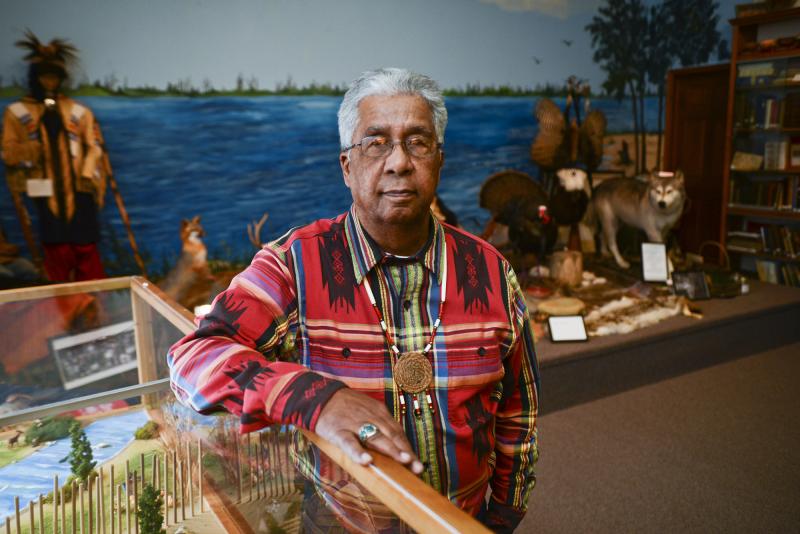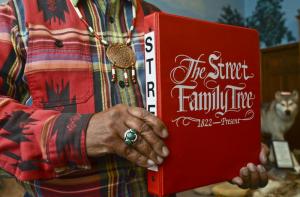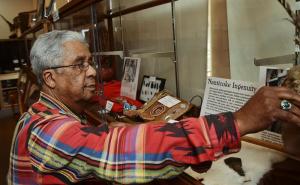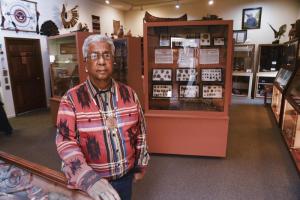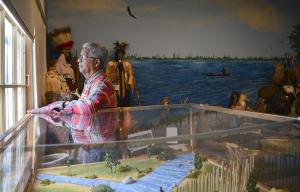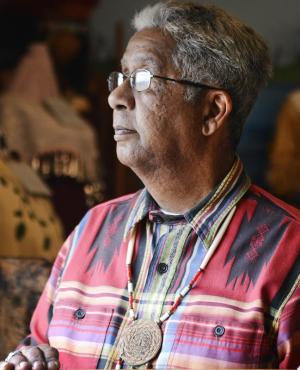Sterling Street: Keeping Nanticoke Indian history alive
Sterling Street said the history of the Nanticoke Indians and other Native Americans from Delaware is limited, and the thing that concerns him the most about the Nanticoke Indian Museum is what would happen if the building were to burn down.
"All this history would be gone," said Street, sitting next to the museum's library and motioning toward the artifacts in the two-room museum. "What would happen to our story if we lost all this? This is the only Indian museum in Delaware."
Street, 75, has been the museum's coordinator for the past six years. The museum opened in 1984 and is located on the corner of Route 24 and Oak Orchard Road.
"People come from all over the world to the museum," said Street, a leather medicine bag hanging from his neck. "Most Indians keep something personal in it," he said when asked about the medicine bag, clearly not wanting to divulge its contents.
Street was born in Wilmington in 1943, and except for a five-year stint in Cheswold, grew up in Wilmington. He said his neighborhood was predominantly Italian, and it was still segregated when he was growing up. That's just how things were, he said. "You knew the places where you could go and the places you couldn't," he said.
It wasn't just the Wilmington area that was segregated. Street spent summers as a child on the family's farm near Harbeson, a spread of nearly 200 acres. During those months, he said if they went to a movie, they would have to sit upstairs in the Millsboro theater.
"There was a unique community of Indians down here," he said. "Everybody knew who we were."
Street said his grandfather was a huckster, selling the farm's goods in Rehoboth and Lewes. He described his grandfather as a stern man, who worked six days a week and went to church on the seventh.
"He was constantly working," he said. "I'd come down here, work in the fields with my grandfather and then go out with him in the truck. That's where I learned my work ethic."
Street said a lot of the kids he went to school with didn't go to school past the eighth grade, but he graduated from high school and pretty much went straight to work at Delaware Power & Light Co. He said he was the first minority to work in the company's offices. He said he started as a mailboy, and, after four years in the Navy, he returned to a job in the IBM department, where he eventually became program manager.
Street moved to Sussex County, right up the street from the museum, in 1999, after retiring from the power company in 1998. He said he always wanted to move back near his family's farm, which is still intact to this day.
Street's Indian name is Earth Keeper, and he feels as though it's appropriate. He still sets up a good-sized garden on the family land in Harbeson every year, he said.
Immediately after retiring, Street worked at Best Ace Hardware at Five Points for 11 years, and then took over as museum coordinator. He said the museum was a natural fit, because the history and genealogy of his family and the Nanticoke Indians had been a passion of his for a long time.
"You can trace our family back to the 1600s," he said.
Street said he became really interested in the history of the Nanticoke Indians in the late 1970s. During his lunch breaks from DP&L, he would go to the local historical society and read microfilm on the subject. He said he's been to every cemetery in Delaware that has a known grave of an Indian.
Street's knowledge of Delaware's Native Americans is broad; he's been asked a couple of times to help document the history for future generations. The museum library has a book dedicated to the last name of Street, for which he provided information. There's a website called Mitsawokett, available at nativeamericansofdelawarestate.com, where a name can be typed into a search bar and what pops up is the lineage of that name, with its offshoots, dating back as far as can be documented.
Street was one of the researchers who helped create the website. Street said he's trying to combat the paper genocide – the systematic destruction of history by reclassifying race – associated with the state's Native American history.
"It's a vast amount of information that's all about us," he said. "I've always had a passion for finding out about our history. Now that I have it, I want to be able to pass it on, so the next generation will be able to pass it on. We have a very rich, proud history."
In addition to his work at the museum, books and website, Street gives public presentations at schools, senior centers and for other groups who are interested in learning Nanticoke Indian history.
"I like to talk about the history of our tribe," he said. "It's important for our younger generations to know who they are. To be proud of who they are. And to know that we're still here."
Street said sometimes sharing the history of Native Americans means teaching stuff that people don't necessarily want to know about. For example, he said, in the 1600s, 1700s and 1800s there were bounties for the scalps of Native Americans. He said the concept of owning land was something foreign to Native Americans until they were taken advantage of by the country's early European settlers. He said Native Americans are often left out of remembrances of service to this country. Over half the states in this country are named after Native Americans, he said.
"Native Americans have fought in every war this country has had," he said, citing Nanticoke Indian Thomas Clark, who fought in the Revolutionary War.
Street credits the younger generation of the Nanticokes showing more activism than earlier generations. As an example, he said, a group recently went to the Dakotas to participate in the protests associated with the Dakota Access Pipeline and the Standing Rock Sioux Tribe.
Street said he doesn't expect to be museum coordinator too many more years, but he does expect to continue teaching Nanticoke history. "I have the knowledge," he said. "And I want to pass it on, so they'll be able to pass it on."
Chris Flood has been working for the Cape Gazette since early 2014. He currently covers Rehoboth Beach and Henlopen Acres, but has also covered Dewey Beach and the state government. He covers environmental stories, business stories and random stories on subjects he finds interesting, and he also writes a column called Choppin’ Wood that runs every other week. He’s a graduate of the University of Maine and the Landing School of Boat Building & Design.














